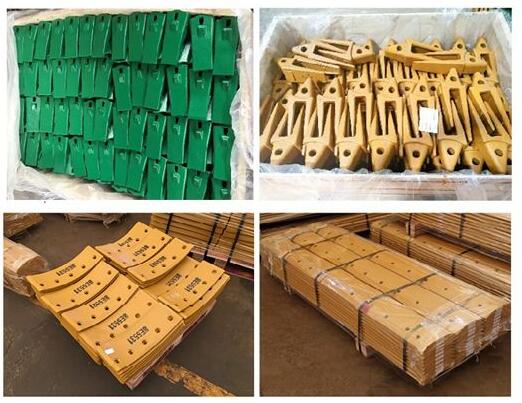Matching the bucket teeth on your excavator, loader or backhoe to the cut of the job can reduce wear and tear on your bucket and bucket.
Many times, a new bucket will contain teeth that are not right for your particular job. To make the right tooth choice, consider the type of material you intend to move and the job your equipment will be performing.

The harder the tooth material, the greater the resistance to wear, abrasion and impact, and the longer the wear life.
Special casting and heating techniques combined with certain material types, such as cast austenitic ductile iron (ADI), can produce stronger but lighter weight teeth. Backhoes, excavators and loaders use ADI teeth for medium- to high-strength operations.
The grinding teeth made from ductile iron withstand the high wear conditions caused by handling sand, gravel and rock. While the wider tip provides additional penetration into the filling material, the additional wear surface and ductile iron combine to extend the life of the teeth.
Backhoes, excavators and motor graders can also use assembled standard teeth. Inconel-molybdenum alloy steel self-sharpening teeth offer an economical solution for general applications.
Depending on the application, forged, high-strength, hardened bucket teeth are also available for loaders, scrapers, excavators and backhoes. Forged teeth made of carbon, chromium, nickel and molybdenum steels are designed to resist wear and impact and offer greater durability and higher tensile strength than standard type ductile iron teeth.
The length and shape of a bucket tooth can affect its performance. Shapes include wider teeth that taper to a blunt point and narrower teeth with a sharper point. Each shape changes the rate of tooth consumption, or the percentage of dirt, rock or other material in contact with the entire tooth. Wide bucket teeth place more surface area on the material and are suitable for general loading and excavation applications. Teeth with larger wear surfaces typically last longer.
However, greater surface area does not result in the ability to penetrate compacted, frozen or rocky materials. Trenching and excavation require tapered bucket teeth with sharp tips. Because the sharp teeth penetrate the material, less hydraulic and fuel consumption is required to drive the bucket through the material.
Flared universal bucket teeth can withstand moderate impact and wear conditions while leaving the smooth ground needed for trenching. Jobs involving high impact and prying out with rock require shorter bucket teeth.
Penetrating softer, denser materials, such as clay, requires bucket teeth with chisel-edge tips and center ribs to provide additional support.
Penetrating harder materials, such as sedimentary rocks, cemented gravels and poorly shot rocks, requires single pick bucket teeth with sharp triangular points.
Some tasks involve hard, hard-to-penetrate materials that typically require fracturing. Double-ended bucket teeth stay sharp and provide maximum penetration while being used primarily as angular teeth.